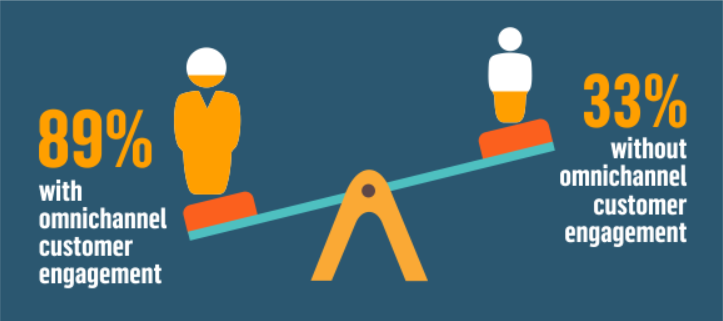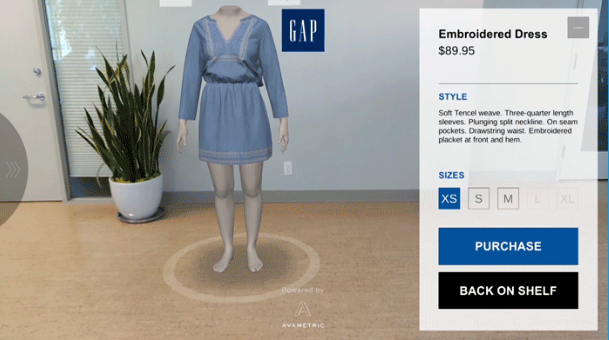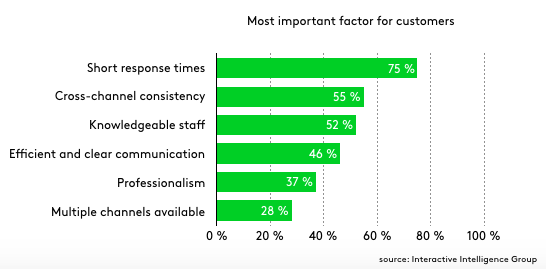In recent years, customer engagement has grown to be the new buzz word among customer experience advocates. The more engaged your customers are, the more emotionally invested they are in your business, and hence more likely to advocate your brand. Given that study has shown that a 5% growth in retention can lead to 25% growth in future profits, it’s no wonder organizations across all sectors have embarked on passionate pursue in growing customer engagements from the leadership and down.
As an industry disproportionately affected by the recent pandemic, retail businesses have extra incentive to provide distinctive customer experience to stand out among the competition. Ensuring business continuity under uncertain market conditions should focus on rethinking operational sustainability or marketing tactics and customer engagement strategy.
Table of Contents
- Introduction
- What is Customer Engagement in Retail?
- Customer Engagement Best Practices for the Retail Industry in 2021
- Unify Customer Data for Omnichannel Engagements
- Invest in an Integrated Campaign Platform
- Pay Close Attention to Retail Trends
- Fine Tune Every In-Store Brand TouchPoint
- Fine-Tune Every Digital Brand TouchPoint
- Harness the Power of Your Data
- Never Skip Training Your Marketing & Support Staff
- Listen to Your Customers, They Are Always Right After All
- 7 Impressive Customer Engagement Stats You Need to Know
- Perfecting Customer Engagement Is No Simple Task
So that leads to a frequently asked question.
What is Customer Engagement in Retail?
Customer engagement in retail refers to the total sum of interactions or touchpoints between a company and a customer (or prospective customer). Engagements can take place through both online or offline channels. The cumulative experience from all the interactions represents the customer experience and defines the business’s customer relationship.
Customer Engagement Best Practices for the Retail Industry in 2021
Building a customer engagement strategy starts with understanding the entire customer journey, including all the various touchpoints customers have with your business. For each touchpoint, consider whether these interactions are consistent – across the touchpoints and communication channels. Additionally, ask whether your business’s overall experience delivers and engages enough to reach the desired outcome.
As a guide to optimizing your customer engagements, here are a compilation of retail customer engagement best practices.
Tip: if you want to learn more about customer engagement besides the retail industry, check out also some strategies for the fitness and the tourism industry.
Customer Engagement Best Practice #1: Unify Customer Data for Omnichannel Engagements
In today’s world, businesses have numerous channels of interacting with customers. From marketing products on social media to customer support chats online to post-sales polling in-store, customer touchpoints often fall under the different functional departments’ purview and managed across different digital and offline channels.
Consequently, companies often struggle with maintaining a consistent level of customer engagement. You may have the most advanced and well-designed website in the world, but if your phone-based customer support team does not align with the rest of your business, customers can feel disconnected.
In plain numbers, companies that utilize omnichannel customer engagement strategies boast a customer retention rate of 89%, a stark contrast to the 33% among those struggling to deliver omnichannel experience effectively.

The key is to unify customer data – taken from the customer engagement metrics that you use – and touchpoints across the channels and systems to build a more coherent omnichannel customer engagement offering. Visibility on how customers interact across various points within their customer journeys allows you to design a centralized response across functions and channels more efficiently.
Best Practice Tip: Start by analyzing and making a detailed map of various customer touchpoints and channels used within your business. This will significantly help to define the final mix of your omnichannel customer engagement strategy. Make sure all of your systems (loyalty, CRM, marketing automation, etc.) are interconnected.
Customer Engagement Best Practice #2: Invest in an Integrated Campaign Platform
Having a unified view of customer data is the first step. Delivering consistent messaging across different functional teams and channels requires a centralized way to manage campaigns and feedback collection on these campaigns’ performance.
To accomplish that, you will need an integrated solution for campaign management. Platforms like ContactPigeon offer the capabilities to design journey flows with automated response to customer behaviors with pre-defined messages that provide visibility into the key messages sent along the entire customer journey.
Best Practice Tip: Aside from pushing consistent messages across the channels, an advanced campaign platform can also collect campaign feedback to be shared with the rest of your company systems. So choose your customer engagement platform carefully, based on the features that you need for your business.
Customer Engagement Best Practice #3: Pay Close Attention to Retail Trends
New technologies and software often change the way businesses interact with customers. For example, the use of mobile checkout turns every store representative into an individual checkout counter. This eliminates the need for long queues and improves customer shopping experience as the need to hand off a customer from one shop associate to another is eliminated.
Specific retail trends revolve around investing in technology to better both customer engagement and experience. NRF found that 3 out of 5 consumers have improved experiences in-store and online with companies that invest in these new technologies.

Monitoring the retail and technology trends, such as Gartner’s report, can give your business a head start as early adopters.
Best Practice Tip:
- Five of the biggest retail market trends that retailers should be aware of are personalization, efficiency, convenience, and privacy.
- Retail experts predicted that VR & AR technologies would play a major role in retail in the years to come.
Customer Engagement Best Practice #4: Fine Tune Every In-Store Brand TouchPoint
Ensuring your business makes a good first impression is equally as crucial as the quality of the product or service itself. The key to retention is maintaining the same top level of experience steadily throughout the customer’s life-cycle.
Something as simple as a greeting when a customer comes through the door, the cleanliness of your stores and its facilities (studies show that 32% of customers have not returned to a business that initially appeared ‘dirty’), the background music, or even the style of your in-store communication (print ads or digital displays/TVs) can make all the difference.
In fact, 44% of consumers in the USA switch to a rival company due to poor customer service experience.
Consequently, it helps to try perceiving shopping experience from a customer’s perspective regularly to understand potential frictions in customer engagements. Once improvement needs are identified, establish a clear process to implement the enhancement and ways to measure the impact of each change.
Best Practice Tip: Try mystery shopper experiments, observations, or customer experience surveys to gain insights into where improvements are needed across the various touchpoints. Also, check some brick-and-mortar marketing strategies to get a deeper insight into how you can increase your in-store traffic and customer satisfaction.
Customer Engagement Best Practice #5: Fine-Tune Every Digital Brand TouchPoint
Like physical touchpoints, ensuring coherent experience across every digital interaction and maximizing every touchpoint’s outcome drives greater business results. A McKinsey study found that companies with more touchpoints experienced 250% more sales compared to the rest.
With the rise of AI and automation tech within the last decade, the ability to optimize digital touchpoints nowadays has become even more accessible. Artificial Intelligence is expected to generate $14 trillion of additional revenue by 2035, according to EmailUplers.
By adopting a mix of marketing and support automation online, you can turn customer pain points into opportunities for promoting the brand. For example, offering online chat with a chatbot can reduce customer call-ins and improve long wait time (average wait time of 45 seconds for online chats in the US) typically associated with negative customer experiences.
Best Practice Tip:
- Break down your touchpoints into three major stages: prior, during, and post-purchase stage. Create a map of the average interactions per stage and how the interaction impacts vital performance stats. Set targets for the KPIs, and examine how to improve corresponding interactions to reach the goals.
- Consider investing in a sophisticated customer engagement platform specializing in your industry (such as ContactPigeon, which has been designed for the retail industry). It will save a ton of time and resources with its advanced automation features and offer ready-made integration to existing ERPs and systems.
Customer Engagement Best Practice #6: Harness the Power of Your Data
Gartner estimates that by the end of 2020, 40% of data analytics projects will be relevant to customer experience. This underscores the importance of using data analytics and dashboard tools to collect, organize, and analyze data to shape and improve your business decisions.
What types of customer data should you gather, and more importantly, how can you use them? Four levels of data types can occur during your marketing and business activities:
- Claimed Data: Data provided directly from end-users or visitors. These can exist in forms of permission to contact, visitor preferences, survey results, etc.
- Tracked Data: These are information that can be tracked with tools. Good examples are the level of engagement from your social media posts, traffic to your website.
- Inferred Data: Data that is characterized by other existing data. For example, inferring customer gender profile by their web behavior or claimed preferences.
- Predicted Data: Data generated by statistical models used to predict future events, such as churn or likely next purchase.
Claim and tracked data are directly provided by the customers with the highest veracity, yet inferred and predicted data are synthesized and analyzed to be best used to generate insights for decision-making.
Best Practice Tip: Have a dedicated resource (data scientists) or efforts to extract valuable insights from your data that may be the key to unlock higher growth.
Customer Engagement Best Practice #7: Never Skip Training Your Marketing & Support Staff
The importance of staff training is underlined by estimates that $62 billion of revenue is lost by US companies due to a poor level of customer service. This shows just how important it is to keep the quality of your staff up to scratch.
However, this does not only apply to customer service persons but also to sales, marketing staff, and any other personnel who comes in touch with your customers with the potential of impacting customer interactions.
The key focus of training your team should be aligned in their understanding and communication of the company’s values and brand image.
Best Practice Tip: Communicate frequently with your staff and incorporate their ideas, suggestions, and feedback into your existing strategy. Don’t just train but keep your ears and eyes open for promising team members.
Best Practice Tip #2: Don’t ignore investing in reliable customer service technology. It will save tons of time as long as it suits your company’s growth stage and needs.
Customer Engagement Best Practice #8: Listen to Your Customers, They Are Always Right After All
It can be easy to get lost in statistics and data, which runs the risk of losing your business’s personal touch. One of the most effective ways to retain an element of personalization and humanity in your business is to listen to your customers.

If you make a change to your business based on customer feedback, do not be afraid to let people know. This will help customers understand that you value and listen to their point of view, which builds customer rapport and trust. Take regular feedback and keep your customers in the loop with newsletters, emails, or more traditional communication forms.
Best Practice Tip: Send out regular feelers for recommendations and questionnaires to boost customer engagement. Remember that if you do get feedback, make sure to incorporate the change to address these inputs. Soliciting customer feedback without actually addressing any concerns will only adversely impact your business’ trustworthiness.
7 Impressive Customer Engagement Stats You Need to Know
- 54% of customers believe companies need to transform the way they engage radically. (Salesforce)
- 61% of customers think that surprise gifts or offers for loyalty are the best way to engage customers. (HelloWorld)
- Fewer than 8% of customers claimed that reward programs were not at all important when deciding on a purchase. (Wirecard)
- Customer engagement is growing increasingly important with the emergence of younger generations. One-third of people aged between 23 and 38 quick to drop a brand if it does not meet their expectations. (Brightpearl)
- Fast responses, knowledgeable service agents, and quick resolutions are considered the three most important aspects of customer service. (Loyalty360)
- 63% of customers claim organizations should make getting to know them a bigger priority. (Loyalty360)
- 93% of businesses that employ advanced personalization strategies saw an increase in revenue in 2018. (Monetate)
- Only 29% of customers receive the engagement they expect, and this number applies not only to enterprises but also to NPOs and public sector companies.
Perfecting Customer Engagement Is No Simple Task
The best practices shared within this post highlights the importance of customer engagement for any business.
Well established brands, such as the British natural cosmetic company, Lush, entertainment titan, Disney, have gone the extra mile to optimize customer engagement to reach their reputations today. ZARA is another stellar example of a fashion retailer doing omnichannel customer engagement in the right way.
Keep in mind that their success is not an overnight occurrence. Many of these companies have spent years investing heavily in staff training, value building, technology, and infrastructure building to enable a more differentiated consumer engagement experience within their stores worldwide.




![Benchmarking Growth Strategies of Top Fashion Retailers [Study]](https://blog.contactpigeon.com/wp-content/uploads/2025/11/top-fashion-retailers.jpg)